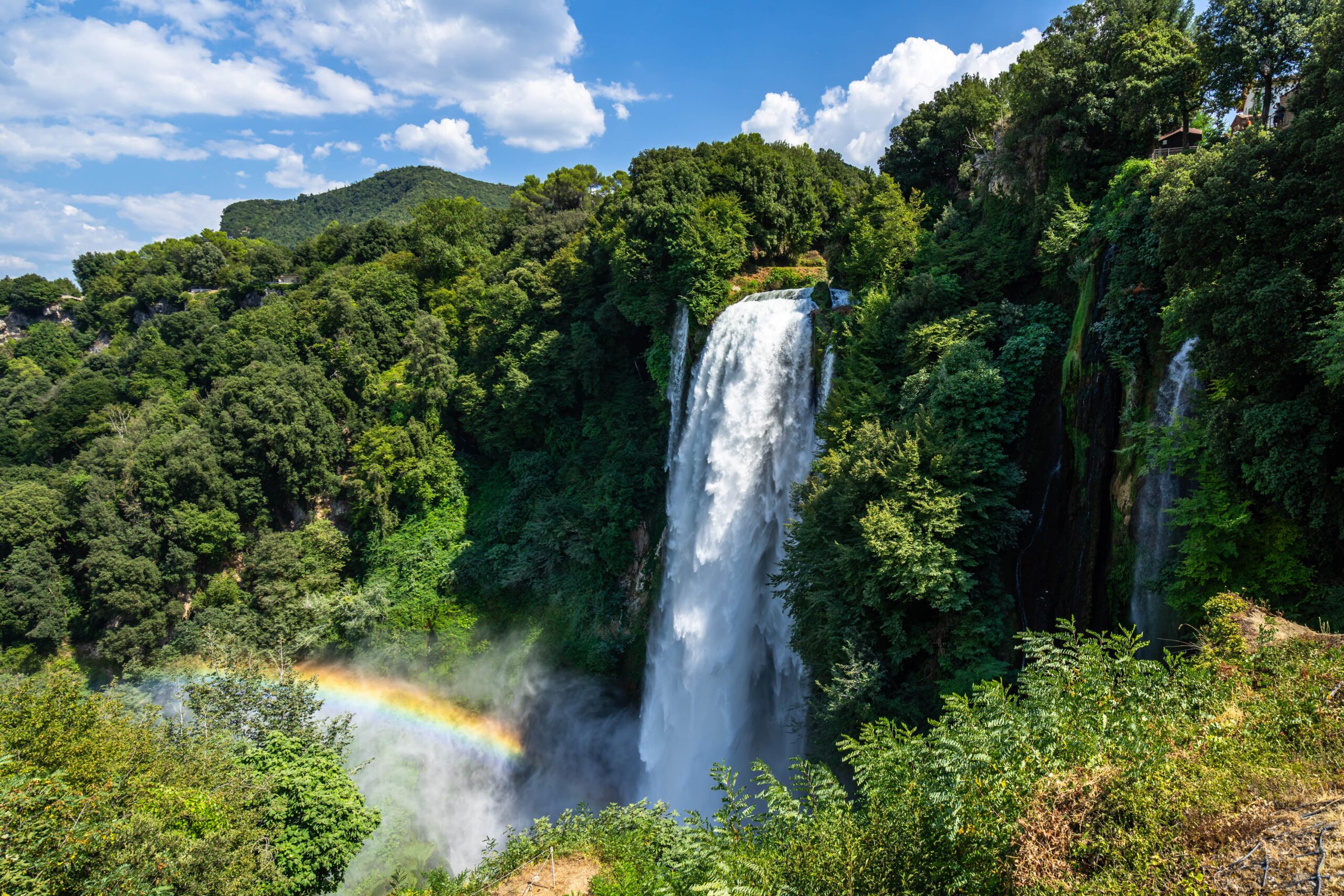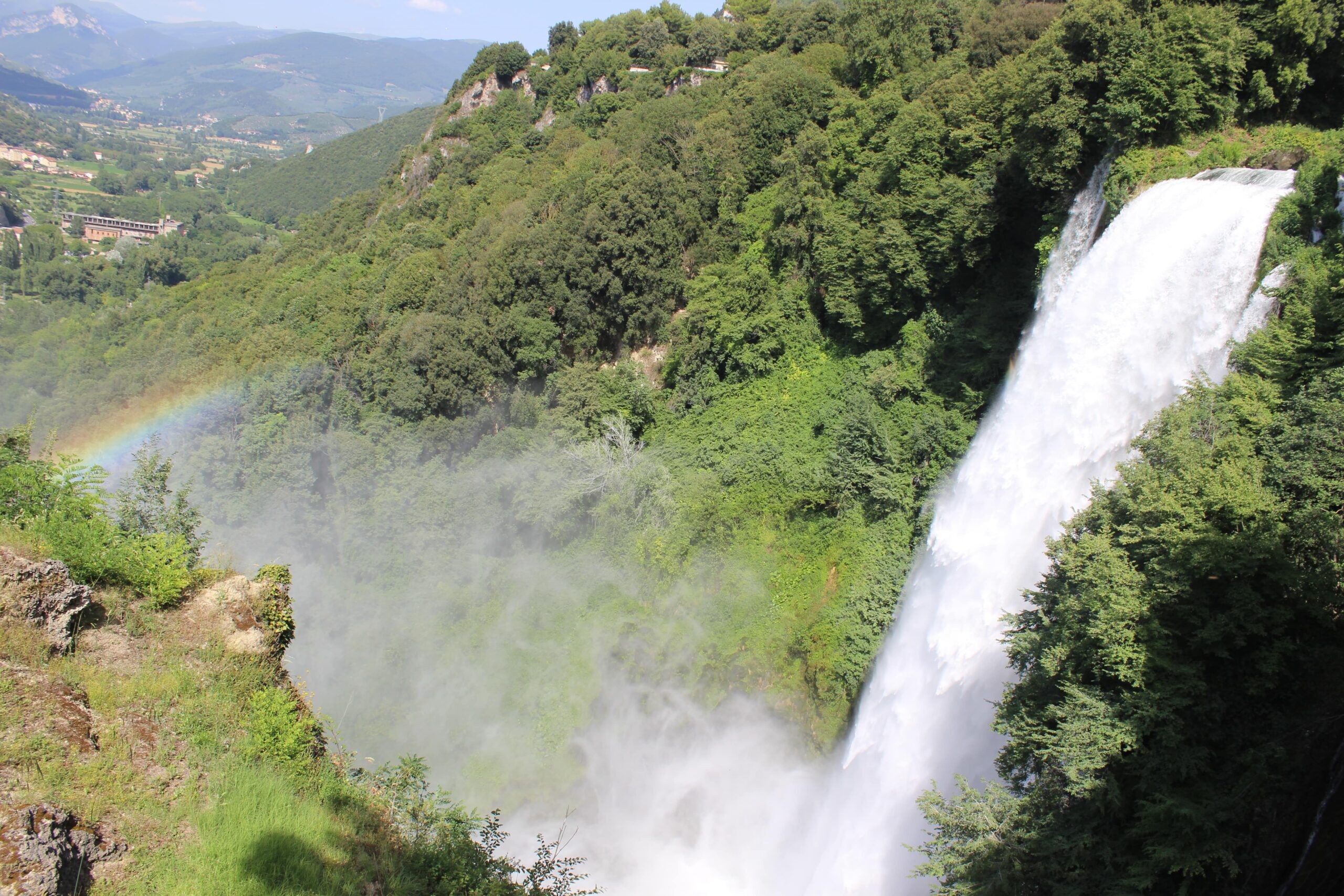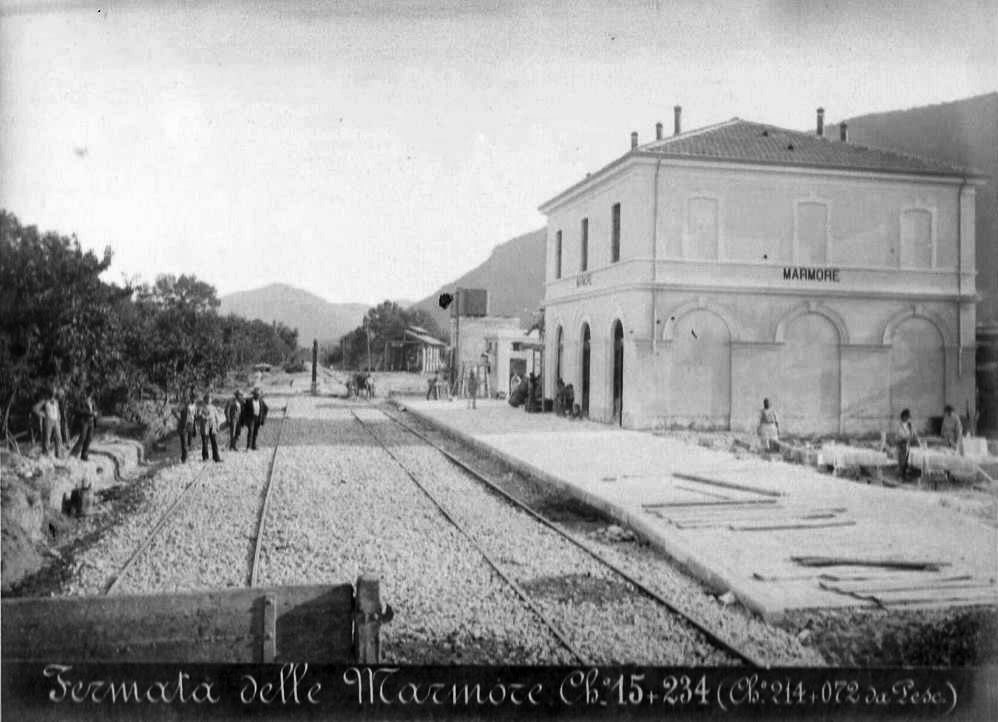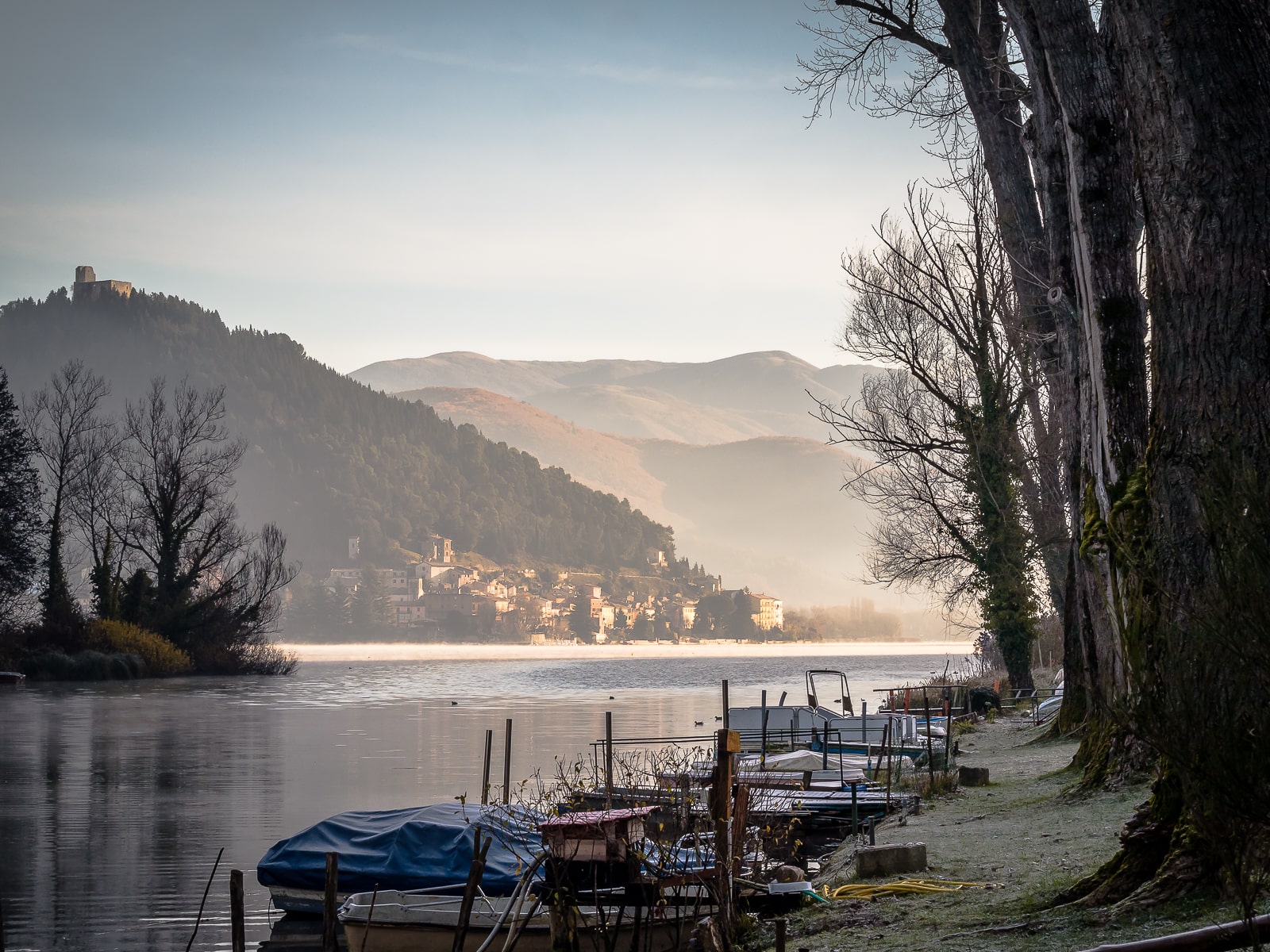





Marmore
The Marmore station has been the closest Umbrian station to the border with Lazio since 1980, when the Piediluco station was decommissioned.
Here, in the extreme northern foothills of the Rieti Valley, where the river Velino, wedged between the mountains, flows into the lower Valnerina, the railway begins a steep descent, characterised by no less than six tunnels, to reach the Terni basin.
Marmore is a hamlet of Terni with a recent development, inextricably linked to the presence of the famous waterfalls: a waterfall formed by three contiguous jumps for a total height difference of about 165 m.
This natural spectacle is in part due to human intervention: in fact, if it is true that in ancient times the waters of the river Velino already mixed with those of the river Nera, already in protohistoric times the limestone in which this water is rich had obstructed this passage, causing the flooding of today's Rieti Valley.
Following the Roman conquest of Sabina, in 290 B.C., the consul Manius Curius Dentatus wanted to cut through the rocky deposits of Marmore, digging the Curiana Quarry, to reclaim the Rieti Valley and make it cultivable.
In the Middle Ages, the Rieti basin flooded again, and several popes over the centuries undertook work on new reclamations, with the creation of several new quarries. Only at the end of the 18th century, with Pope Pius VI, the architect Andrea Vici definitively solved the problem.
Of the ancient Lacus Velinus a few smaller bodies of water remain, including the not so far Lake Piediluco.
Marmore Falls, just a few hundred metres from the train stop, is known for its spectacularity: it has always been a popular tourist destination and has been celebrated by painters and poets, who have imagined the river Velino as a lover throwing himself down from the mountain to join his beloved Nera (and in fact the hydronym Nera is traditionally used here in the feminine form).
The abundant water of the falls is also intensively exploited to generate hydroelectric power.
Marmore Falls are part of the Nera River Park.
In 1927, the entire territory of Papigno – of which Marmore had been a fraction until then – was absorbed by the city of Terni, which was constituted as the capital of the province in that year.

Project by Riattivati Youth Cultural Association
With contributions from: FAI – Fondo per l’Ambiente Italiano ETS, INTESA SANPAOLO, Rotary Club Rieti
Thanks To the promotion comittee: Amici di Rieti, Associazione Culturale Giovanile Riattivati, Rotary Club Rieti e Associazione Collezionisti “Sabatino Fabi”
